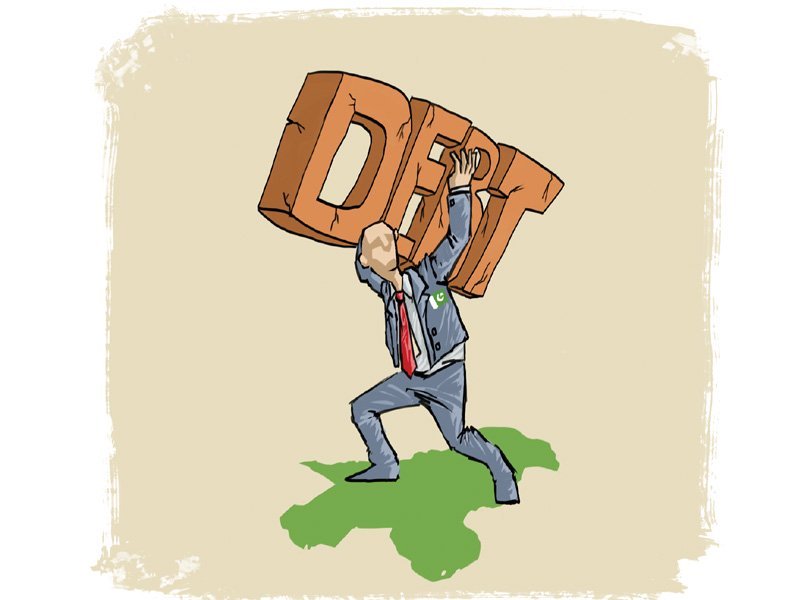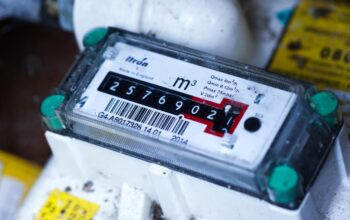KARACHI:
Pakistan’s reliance on short-term borrowing in foreign currency denominations is on a rise since the last three successive months to maintain the country’s foreign currency reserves at an appropriate level, as small-tenure debt touched an eight-month high at $4.87 billion in June.
A surge in foreign currency loans, mostly from commercial banks operating in Pakistan, hints that the country’s capacity to make international payments for imports and foreign debt repayments has slightly weakened.
“State Bank of Pakistan (SBP) forward swaps position (forward liabilities) increased by $130 million to $4.87 billion as of June 2021, the highest level since October 2020,” Arif Habib Limited (AHL) reported citing the central bank’s data on Saturday.
According to the data, cumulatively in the past three consecutive months, the forward swaps position has surged by around $600 million to $4.9 billion in June compared to $4.3 billion in March 2021.
The country’s foreign currency reserves stood at $17.82 billion in the week ended July 23, 2021. They stood close to the prior week’s (ended July 16, 2021) four-and-half-year high at $18.05 billion, according to the central bank.
“The government has increased short-term commercial borrowing (of up to one-year duration) to maintain the country’s foreign exchange reserves…high,” Economist Shahid Hasan Siddiqui said while talking to The Express Tribune.
Almost half of the country’s foreign currency reserves at $17.82 billion currently “are filled by long-term borrowing from international financial institutions, friendly countries and short-term borrowing”.
The central bank’s swap position increased during the month the country reported an exorbitantly high current account deficit of $1.8 billion in the single month of June mainly due to imports soaring to a record high. More importantly, the reserves have dropped by over $200 million in the week ended July 23, 2021, he said.
“The developments suggest that the country’s capacity to make international payments has weakened,” he said.
AHL Head of Research Tahir Abbas said that the swap position had dropped to $4.3 billion by March 2021 from $5.8 billion during June-September 2020. They reduced in the wake of strong inflows on account of workers’ remittances, increased export earnings and receipts of notable $1.8 billion under Roshan Digital Accounts during the first 10 months since the launch of RDA in September 2020.
He argued that the swap position at $4.9 billion at present is still lower by $3.1 billion compared to June 2019’s level of around $8 billion. “Pakistan’s external economy had improved in the wake of the Covid-19 pandemic,” he said.
He said the uptick in swap position would be overcome soon as commercial borrowing was short-term in nature.
The breakdown of central bank data suggests short-term debt of $4.87 billion included the loans maturing in one month worth $774 million, the debt worth $1.92 billion maturing in one to three months and $2.17 billion maturing in over three-month to one year.
The central bank senior officials, however, have argued time and again that the growth in foreign currency reserves was achieved through sustainable inflows of workers’ remittances, export earnings and RDA inflows rather than through international and domestic borrowing.
“The net foreign borrowing has remained flat since new borrowing is being made only to repay the previous debt,” an official said the other day.
“In August, Pakistan’s reserve buffers (gross reserves less forward liabilities) are expected to rise by another $2.8 billion through the IMF’s planned new global SDR allocation,” the central bank said in its monetary policy statement (MPS) issued on Tuesday.
International media reported the other day that the IMF has planned to disburse SDR equivalent to $330 billion to developing and under-developed economies, including Pakistan, Ecuador and Turkey, to support them to cope with new waves of the Covid-19 pandemic around the globe these days.
The central bank predicted that the current account deficit may widen to, still sustainable, 2-3% of GDP in the current fiscal year 2022 amid surging imports.
“With the contained current account deficit and healthy commercial, official, portfolio and FDI inflows, Pakistan’s external financing needs of around $20 billion are expected to be more than fully met in FY22,” SBP said in the MPS.
SBP’s FX reserves rose by $5.2 billion during FY21 to end at over $17 billion or around three months of imports, a four-and-half-year high. Moreover, SBP’s net external reserve buffers (gross reserves less forward liabilities) have risen by $14.1 billion since the beginning of FY20, it said.



